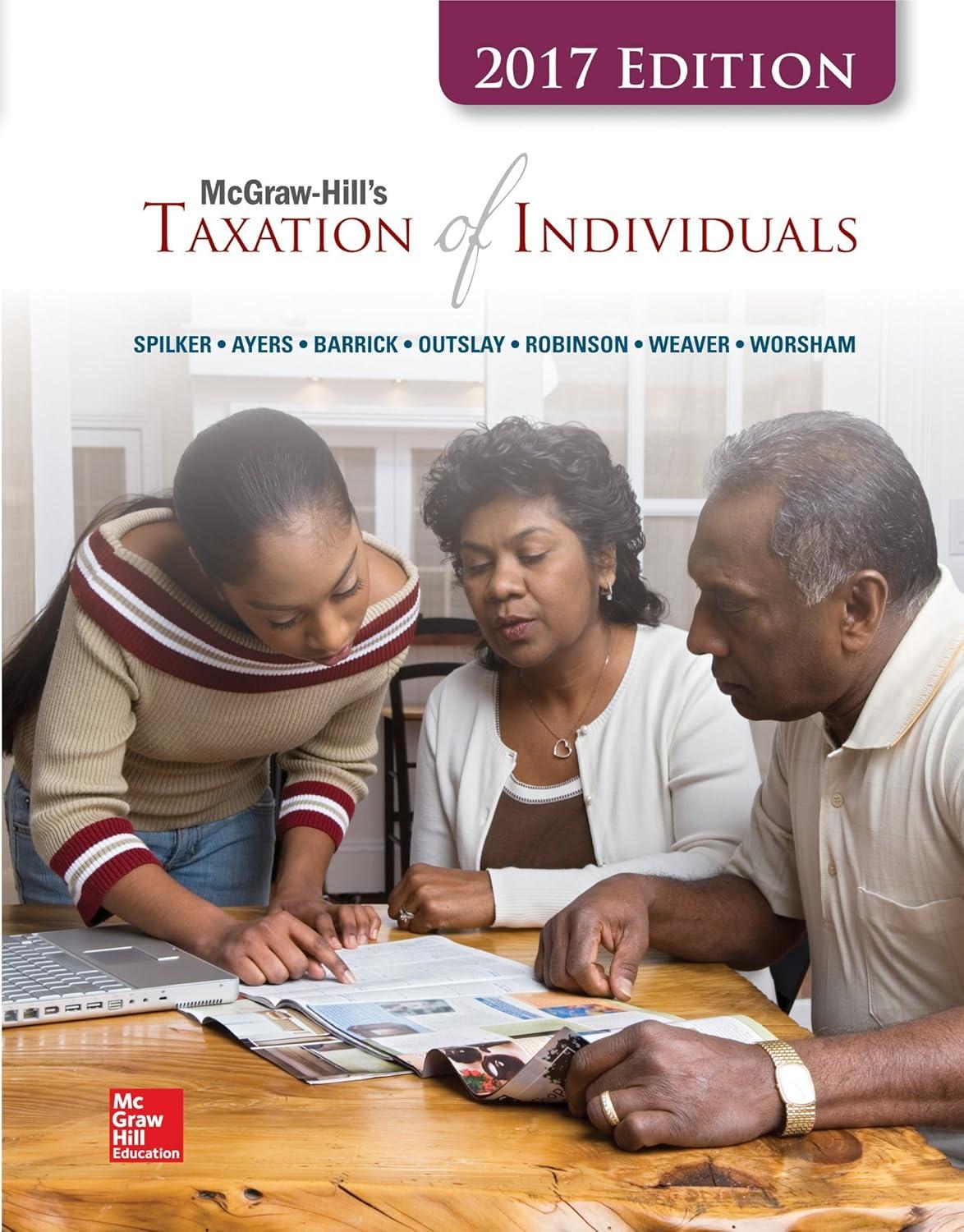Suppose that David adopted the last-in, first-out (LIFO) inventory-flow method for his business inventory of widgets (purchase
Question:
Suppose that David adopted the last-in, first-out (LIFO) inventory-flow method for his business inventory of widgets (purchase prices below).
Widget Purchase Date Direct Cost Other Costs Total Cost #1 August 15 $2,100 $100 $2,200 #2 October 30 2,200 150 2,350 #3 November 10 2,300 100 2,400 In late December, David sold widget #2 and next year David expects to purchase three more widgets at the following estimated prices:
Widget Purchase Date Estimated Cost #4 Early spring $2,600 #5 Summer 2,260 #6 Fall 2,400
a) What cost of goods sold and ending inventory would David record if he elects to use the LIFO method this year?
b) If David sells two widgets next year, what will be his cost of goods sold and ending inventory next year under the LIFO method?
c) How would you answer
(a) and
(b) if David had initially selected the first-in, first-out (FIFO) method instead of LIFO?
d) Suppose that David initially adopted the LIFO method, but wants to apply for a change to FIFO next year. What would be his §481 adjustment for this change, and in what year(s) would he make the adjustment?
69. On November 1 of year 0, Jaxon borrowed $50,000 from Bucksnort Savings and Loan for use in his business. In December, Jaxon paid interest of $4,500 relating to the 12-month period from November of year 0 through October of year 1.
a) How much interest, if any, can Jaxon deduct in year 0 if his business uses the cash method of accounting for tax purposes?
b) How much interest, if any, can Jaxon deduct in year 0 if his business uses the accrual method of accounting for tax purposes?
Step by Step Answer:

McGraw-Hill's Taxation Of Individuals
ISBN: 9781259729027
2017 Edition
Authors: Brian Spilker, Benjamin Ayers, John Robinson, Edmund Outslay, Ronald Worsham, John Barrick, Connie Weaver






